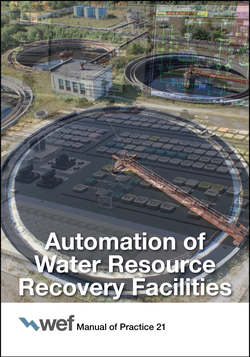Читать книгу Automation of Water Resource Recovery Facilities - Water Environment Federation - Страница 185
1.0 RELATIONSHIP OF SPECIFICATIONS AND DRAWINGS
ОглавлениеThe scope of this chapter is limited to discussion of technical requirements for process control systems. Readers are referred to other resources such as the Construction Specifications Institute (CSI) and Engineers Joint Council Development Council for commercial requirements including the bid form, contract terms and conditions, and payment provisions.
Drawings and specifications work together to establish the requirements of a project, or process control system, which is the term used in this discussion. Typically, text-based requirements in specifications will contain greater detail than drawings because of space constraints in drawings. Information that can be provided pictorially is shown on the drawings, while the details are provided in text-based form. Therefore, each instrument shown on a plan view and each device shown on a network configuration or identified on a schedule should have a corresponding detailed specification. Technical and performance requirements for the instruments or devices should be detailed in the specifications.
The intended end user of specifications varies. The audience may be the installer (a contractor), financial authority, manager, or equipment operator. Clear presentation of device requirements enables the varied users to better understand the operation or features of the device in advance.
All steps required for specifying, procuring, installing, and commissioning a complete process control system should be included in the specification process. This consists of specifications and drawings, bidding information, contract terms and conditions, and payment provisions. Inclusion of the phrase, “or equal”, with respect to specific products or manufacturers, may be required to meet competitive bidding requirements. Use of the phrase, “or engineer-approved equal”, may allow the engineer to retain responsibility for determining if the contractor-proposed product meets project specifications while retaining a competitive bid. Correct and detailed process control system specifications are critical to the success of the project. Specifications should include detailed hardware and software requirements, input/output (I/O) signal listings, and control narratives that provide information to the contractor on how to configure control system software to meet project goals.
In addition to relying on their own experience, design engineers typically rely on the following two key guides when developing detailed specifications: The Project Resource Manual, published by CSI (2005), and Specification Forms for Process Measurement and Control Instruments, Primary Elements and Control Valves (Standard S20) (ISA, 1981). The Project Resource Manual is a master specification document intended to provide every content-related detail that design engineers would need to specify a process control system. Specification forms provide a consistent method of promoting and documenting requirements.
